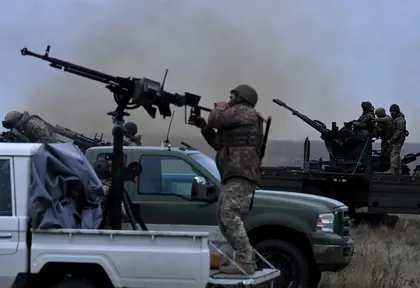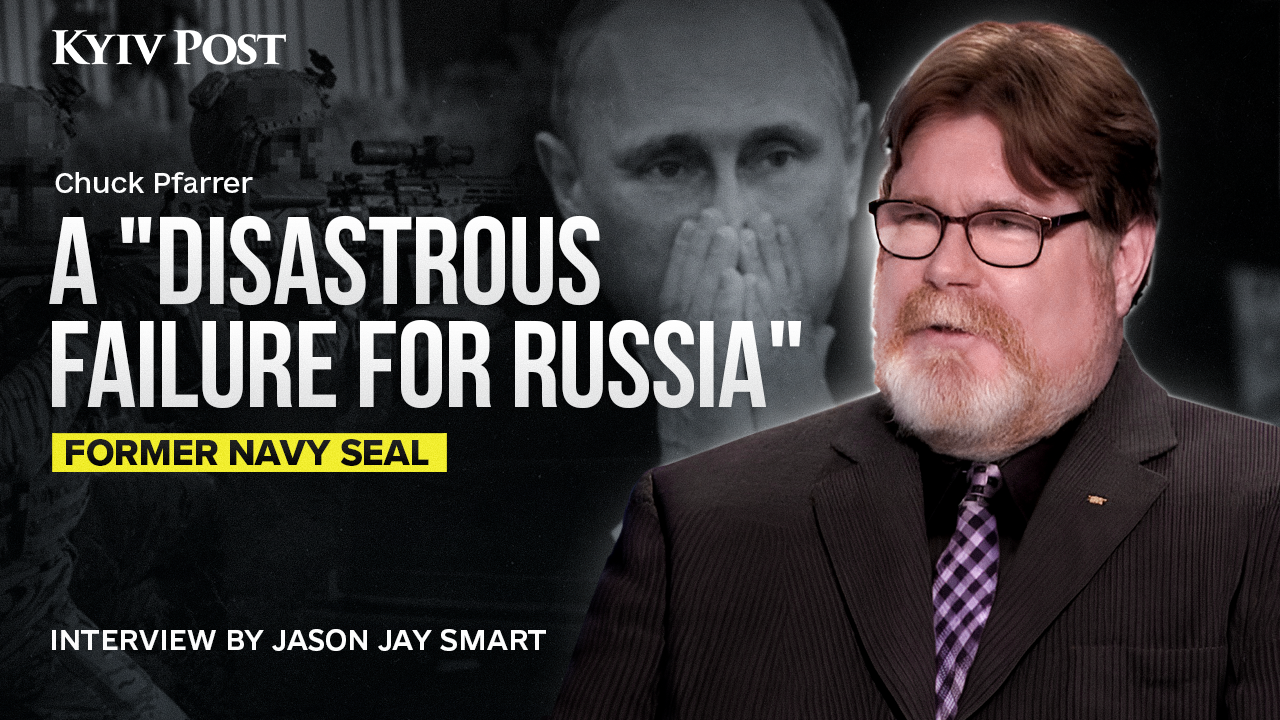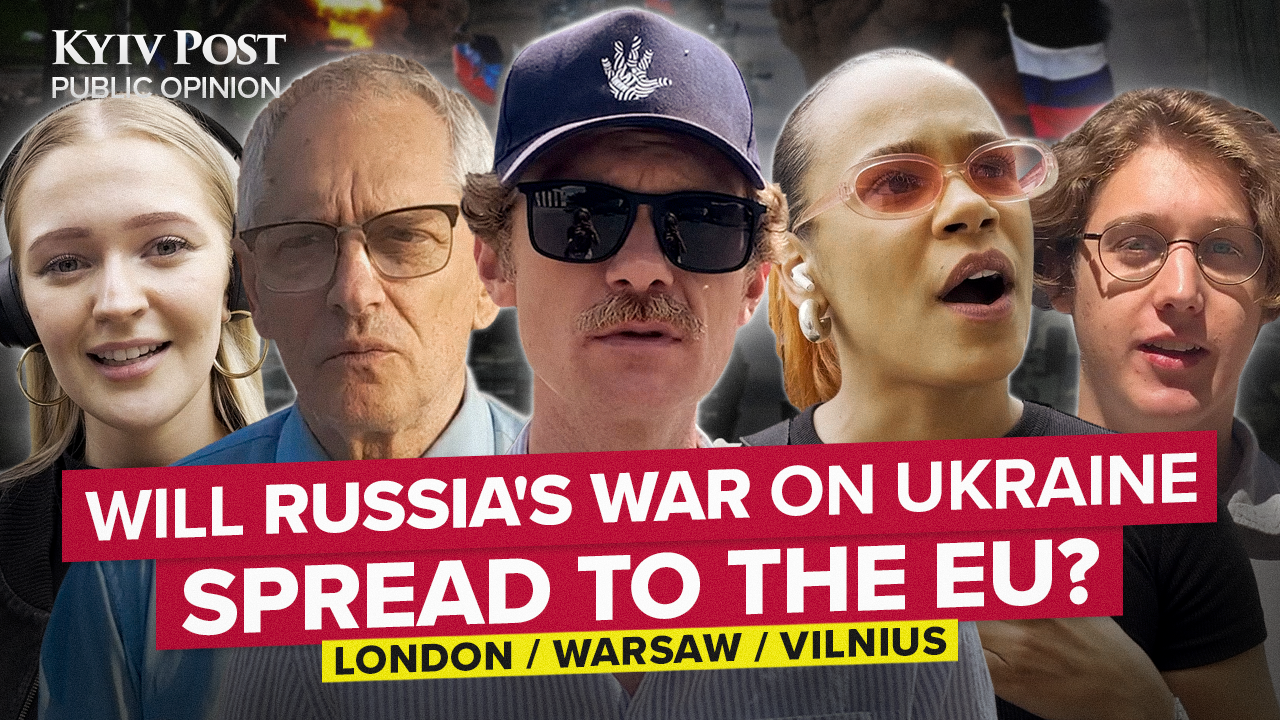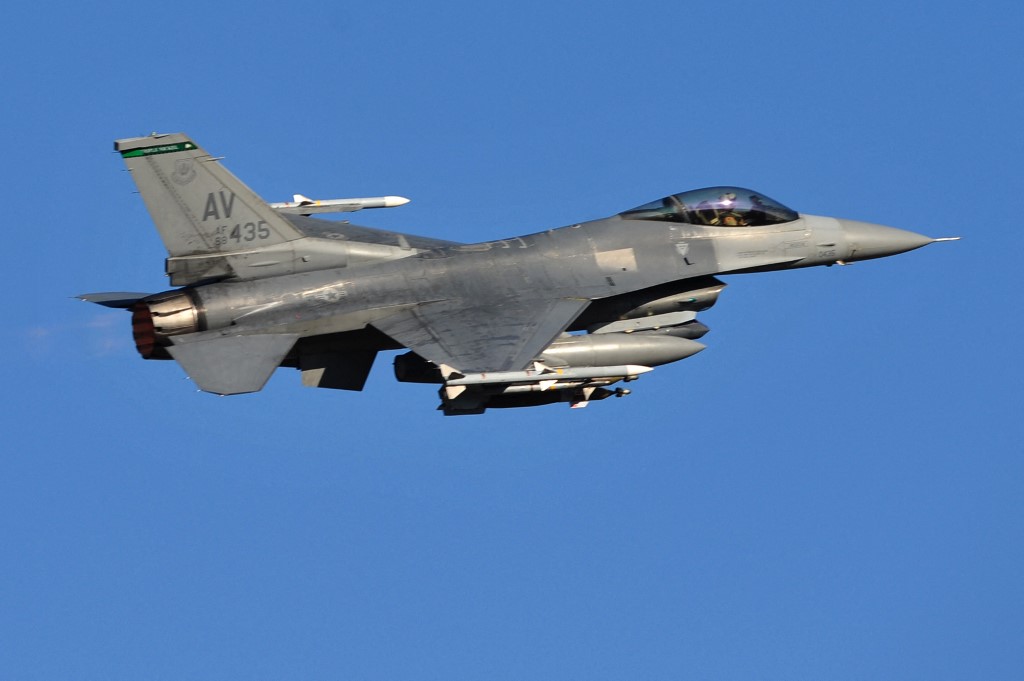Ukraine’s most cost-effective battlefield weapon – cheap drones taking out Russian heavy weapons costing millions of dollars – is being overwhelmed by similar aircraft mass-purchased and -produced by the Kremlin, and according to drone pilots Kyiv’s continuing reliance on volunteer donations and crowdsourcing won’t allow them to hold that line in the sky much longer.
Diego Rodriguez, a Ukrainian frontline drone operator, in comments to Kyiv Post, said that his day-to-day war is an outnumbered fight pitting Ukrainian hobby drones bought by grassroots donations, and modified by volunteers to carry explosives, against Kremlin combat units armed with strike drones purchased by the Russian state and produced on an industrial scale.
“Why don’t we (the Ukrainian military) do it (employ attack drones) en masse? Enthusiasts do it, with their own money, volunteers collect the cash, and so on. (But) only the state can implement this on a large scale,” he said.
Three other Armed Forces of Ukraine (AFU) drone operators interviewed for this article confirmed Rodriguez’s comments. By almost any measure, they said, in the Russo-Ukraine war small explosive-toting drones operated by frontline soldiers are critical for combat success and troop survival.
In most ground battles, they said, hobby drones converted to drop a grenade or fly an explosive charge in a suicide strike account for around one of every three Russian tanks, infantry fighting vehicles, ammunition trucks, and crew-served weapons destroyed in combat.

Kuleba Talks Peace in China – Bohdan Nahaylo
According to Ukraine’s Ministry of Digital Transformation, one of three government agencies involved in transferring crowd-funded drones to Ukrainian army operators, from June through August cheap aircraft priced in the $500-$5,000 range were responsible for the elimination of more than 1,200 Russian heavy weapons. Jury-rigged Chinese Mavic and DJI aircraft are probably the most effective weapons on the Ukrainian battlefield, Myhailo Fedroriv, Minister of Digital Transformation, said in an official statement.
First fielded during Russia’s first invasion of Ukraine in 2014-15, civilian drones and drones that teams converted to war use have evolved from a battlefield curiosity into a combat system found in practically all AFU combat units and almost always prioritized as key weapons in the best-commanded ones.
By late 2023, practically all Ukrainian combat brigades contained at least a single drone section operating explosives-carrying converted drones bought by donations and delivered by volunteers.
Some canny AFU brigadiers carry drone team members on unit registers as cooks, clerks or truck drivers, in order to field multiple drone sections.
In 92nd Mechanized Infantry Brigade, one of the AFU’s most decorated fighting formations, the drone group Code 9.2 on Monday claimed its aircraft stopped a Russian Dec. 10 ground attack in its tracks in the eastern Bakhmut sector, and published video of hobby drones dropping grenades through the hatches of halted, brand-new Russian BTR-82 personnel carriers.
State-sponsored attempts to use government contracting to place useful numbers of small attack drones into AFU soldiers’ hands, like US deliveries of a reported 100 Switchblade-300 drones over 2022-23, have been dwarfed by the scale of the Ukraine-Russia war stretching along a 2,000 km front consuming hundreds of drones, on both sides, every day. Instead of government contracting and funding, volunteers and grass-roots activism have stepped in.
Robert “Madyar” Brovdi, an army officer running large-scale drone operations in the southern sector, according to statements sourcing parts and equipment as far away as the Netherlands and China, and delivering aircraft to, on average, 15 drone sections operating along the front. In November according to published accounting data he collected and committed $1.5-$2 million in donations, almost all from individual Ukrainian citizens.
Recent video published by Brovdi’s information section showed an engagement, geolocated by Kyiv Post to a Ukrainian Marine bridgehead on the left bank of the Dnipro River, in which hobby drones all costing less than a thousand dollars, score multiple hits around the thin armor of the rear engine deck of a Russian T-80 tank worth $1.5-$2 million.
Perhaps Ukraine’s largest-scale operation delivering small attack drones into Ukrainian soldiers’ hands is called Armiya Droniv, a volunteer-run operation run under United24, a high-profile umbrella initiative created to draw international corporate and individual donations to Ukrainian self-defense efforts.
The Office of President Volodymyr Zelensky runs United24. According to published financials, in October and November 2023 the group collected $7-$7.5 million in donations, each month, in donations for Ukrainian defense needs, of which a portion went to drone construction or acquisition.
In October 2023, the last month the group published data, drones delivered to AFU units via volunteer donations to United24 resulted in the destruction of, among other heavy weapons, 208 Russian tanks, 272 armored personnel carriers and 331 artillery systems.
Those kill claims, if accurate, have produced one of the most lopsided cost-to-kill ratios in modern warfare. Theoretically, for every dollar donated to the purchase of a Ukrainian attack drone by United24, at least $100-$150 of Russian military equipment was destroyed.
Drone operators interviewed by Kyiv Post pointed to the danger of the Ukrainian government’s continuing reliance, after two years of war, on volunteers and public donations to deliver tactically critical small attack drones to frontline combat units.
The Kremlin is buying tens of thousands of Chinese hobby drones and converting them for war in state-run factories, and unless the Ukrainian state acts, AFU drone teams will be overwhelmed by raw numbers of Russian drones, they said.
Brovdi said Russian drones in his sector outnumber Ukrainian seven to one, in a Monday statement.
A Donetsk-sector pilot with the call sign “Potter” said in an interview: “It’s high time for the Ukrainian [government] to address this – allocate funding, import parts and all components at a state level, and establish mass production.
“Volunteer organizations lack the capacity to meet the demand for the number of drones we require. I firmly believe that at least 80 percent of the course of the war depends on this type of weaponry.”
The trend of the Kremlin slowly adapting to the Ukrainian advantage in small drone operations had been evident for some time, but in recent weeks the situation has deteriorated.
In a Dec. 4 petition filed with the office of President Zelensky, activist Roman Cherednichenko said that intervention by the Ukrainian state and particularly changes in law that would allow government funding to support volunteer drone operators, and regulations complicating import of drone parts, was critical.
Cherednichenko wrote in part: “Recent events show that the longer the war continues, the more difficult it is for us to get weapons from our Western partners. Problems with the allocation of funds for weapons from the West are also increasing.
“A huge number of drones are used and destroyed every day. The military needs mass procurement and in-house production, including FPV drones… Ukraine needs tens of thousands of new drones per month, and the Ministry of Defense announced the purchase of only a few thousand in six months.”
“Russia, which is a backward country in every sense, now is producing drones by the tens of thousands,” Cherednichenko wrote.
[A link to the official petition to President Zelensky’s office is available here.]
Attempts to interest Ukrainian government contractors in German anti-jamming systems his company could deliver quickly, and that would provide cutting-edge protection to Ukrainian drone communications, are met with indifference, Shtepa said.
Ukroboronprom, the Ukrainian state agency responsible for military equipment acquisition and production, in a written response to a Kyiv Post request for information about Ukrainian FPV manufacturing, and progress on developing means to counter increasing Russian drone capacity, stated it was unable to comment because of national security.
“Our adversary has the capability to re-equip their drones, unfortunately. These capabilities are likely at an industrial level, unlike our situation where we rely on individual volunteers, organizations, and people,” warned a drone section commander with the call sign Nazar. “We are better, but quantitatively, we are not superior. Unfortunately, this is a situation where quantity can exceed quality.”
Austrian aerospace commentator Tom Cooper in a Dec. 18 post warned:
“The Ukrainians are manufacturing qualitatively better drones and training better drone pilots, no doubt, but: The Russians are both learning and flooding the battlefield with small killing machines…
“The West is still snoring in deep sleep in this regard.”
“Until there is a fundamental change in the way not only the GenStab-U in Kyiv (Ukraine’s General Staff), but also all the similar instances in the West (see the Pentagon, NATO HQ in Brussels)… comprehend the gravity of this fact, the AFU are on the best way to being, literally, overwhelmed by the Russian capability to manufacture and deploy immense numbers of mini-drones,” Cooper said.
You can also highlight the text and press Ctrl + Enter









